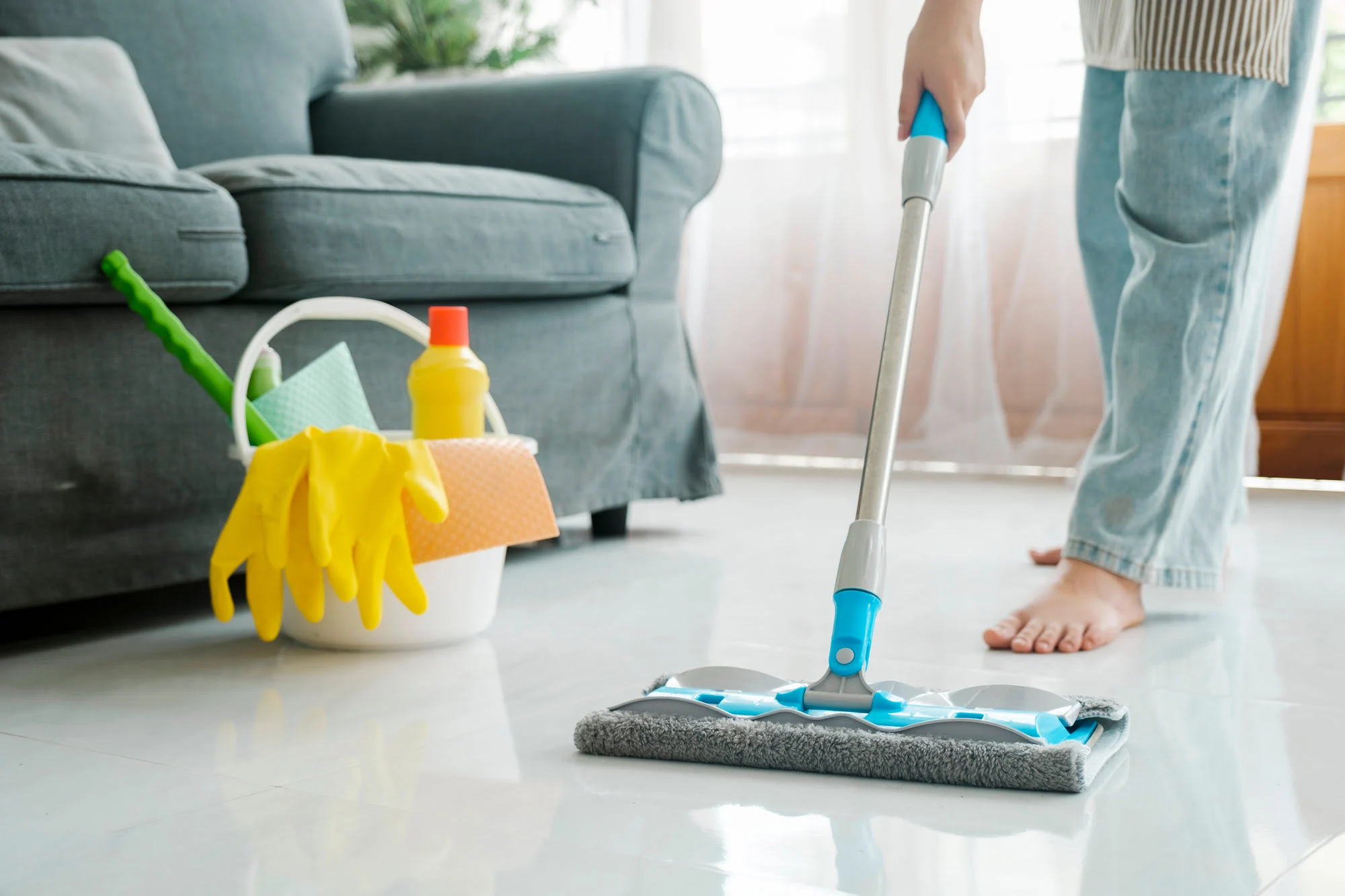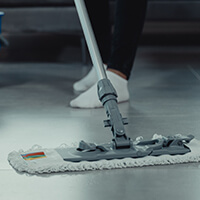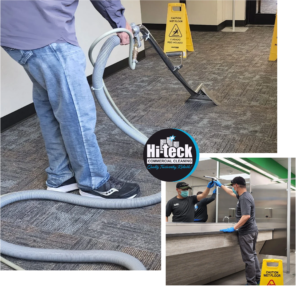In our quest to maintain a clean and healthy environment, terms like cleaning, sanitizing, and disinfecting are often used interchangeably. However, each process has distinct characteristics and applications, especially important in settings like homes, schools, and healthcare facilities.
A clear distinction between these terms— cleaning vs sanitizing and sanitizing vs disinfecting—can help you choose the right approach for your needs.
Let’s learn more about each of these terms and when to choose each type of service.
Key Takeaways:
- Cleaning removes dirt and impurities, sanitizing reduces bacteria to safe levels, and disinfecting kills a broad range of pathogens on surfaces.
- Understanding the differences and applications of cleaning, sanitizing, and disinfecting, ensures a suitable level of hygiene and safety for any environment.
Table of Contents
Cleaning: The Removal of Dirt and Debri
Cleaning refers to the removal of dirt, grime, and impurities from surfaces. This process does not kill germs but removes them, lowering their numbers and thus reducing the risk of spreading infection.
It involves the use of soap (or detergent) and water to physically clean surfaces and objects. Cleaning is usually the first step in a more comprehensive process to create a healthier environment because a clean surface allows the following processes of sanitizing or disinfecting to work more effectively.
Sanitizing: Reducing Bacteria on Surfaces
Sanitizing is a chemical process that reduces and even kills germs on surfaces to make them safe for contact. This step is crucial in environments where hygiene is a priority, such as kitchens and hospitals. Sanitizing can be achieved by either heat, such as in dishwashers with a sanitizing cycle, or by using chemical sanitizers.
Difference Between Sanitizing and Cleaning
The difference between sanitizing and cleaning lies in their purposes; cleaning is primarily the removal of visible debris and substances from surfaces, whereas sanitizing aims at reducing the bacteria to safe levels, not necessarily eliminating them.
Disinfecting: Killing Germs on Surfaces
Disinfecting destroys or deactivates both bacteria and viruses on hard, nonporous surfaces. Disinfectants are typically stronger than sanitizers and can kill nearly 100% of germs on surfaces or objects. This process is used in medical settings and where there is a high risk of infection transmission, such as during flu seasons in schools or workplaces.
Sanitizer vs Disinfectant: What’s The Difference?
While both sanitizers and disinfectants are effective in controlling the spread of pathogens, they differ in the scope of their germ-killing abilities.
A sanitizer reduces the number of bacteria to a safe level as determined by public health standards. In contrast, a disinfectant is more powerful and can kill a wider range of microorganisms including, bacteria, viruses, and fungi.
Sanitizers are also generally less harsh and may be used on skin and more delicate surfaces. Disinfectants, on the other hand, are used on hard, non-porous surfaces and are too harsh for human skin.
Choosing the Right Method
The choice between cleaning, sanitizing, and disinfecting should be based on your needs:
- Regular Maintenance — Regular cleaning is sufficient for many homes and offices.
- Food Surfaces — Kitchen counters and utensils should be sanitized to prevent foodborne illnesses.
- High-Touch Areas — Disinfecting is recommended for high-touch surfaces like door handles, light switches, and bathroom fixtures, especially during an outbreak or flu season.
Contact Hi-Teck Commercial Cleaning for Quality Floor Care and Maintenance
Ready to see your floors shine like never before? Partner with Hi-Teck Commercial Cleaning for an unmatched professional floor care and maintenance service. From deep cleaning to maintenance, our experts are equipped to bring out the best in your floors.
Contact us today to ensure your floors make the right impression every day!





